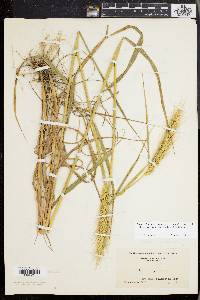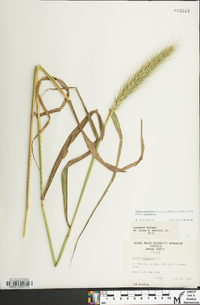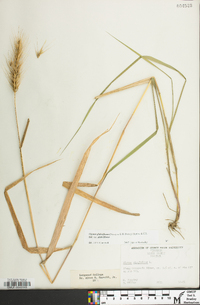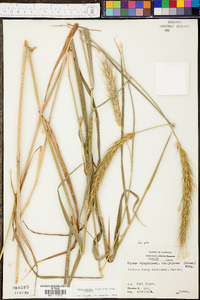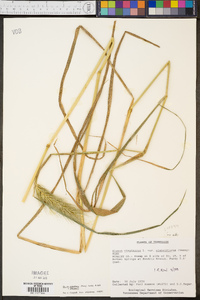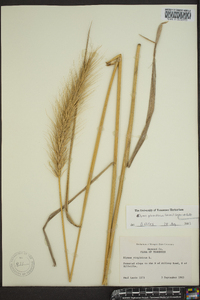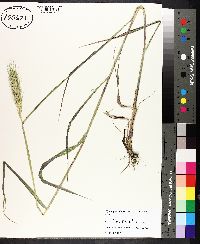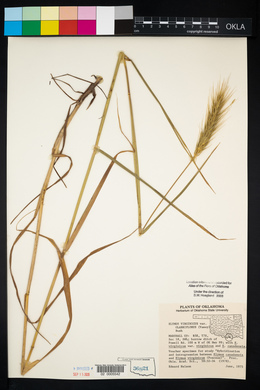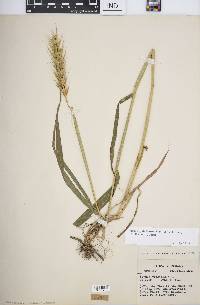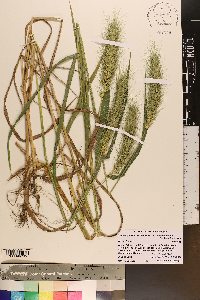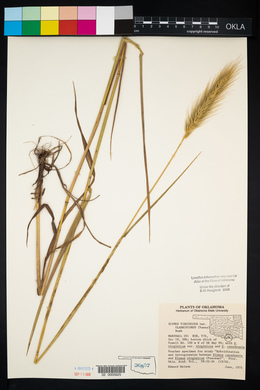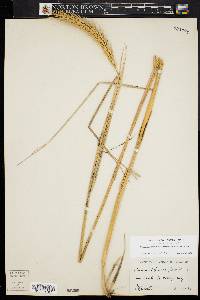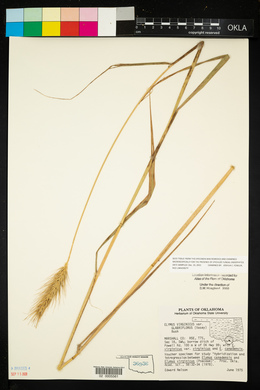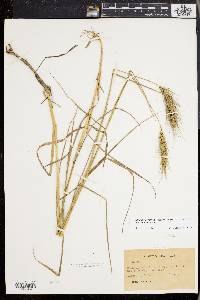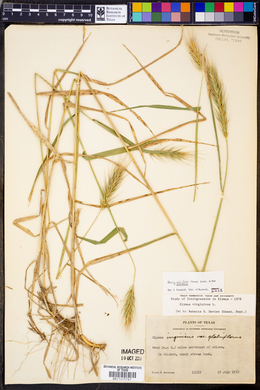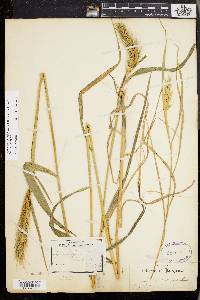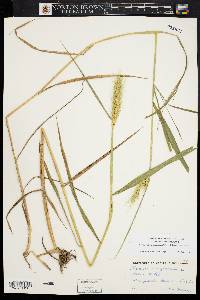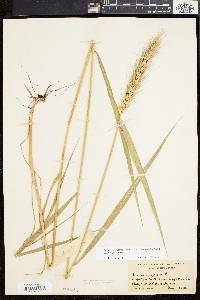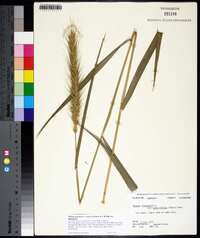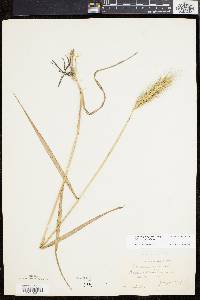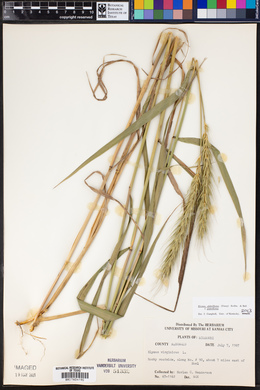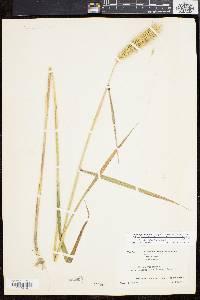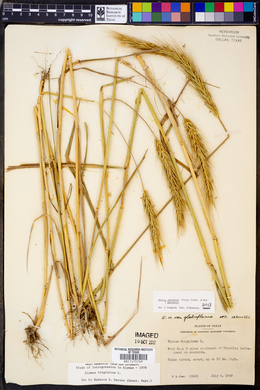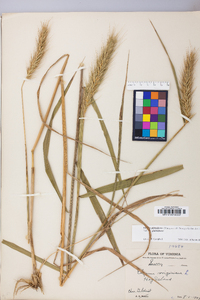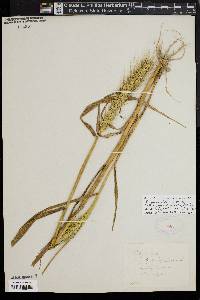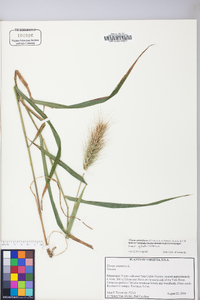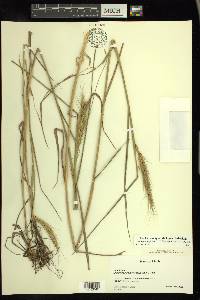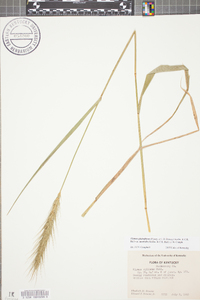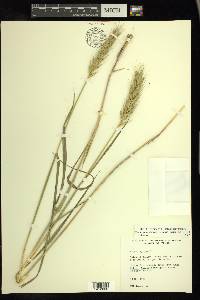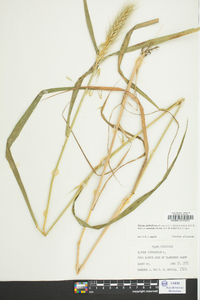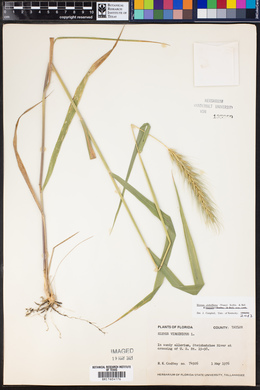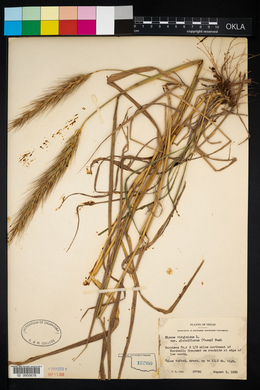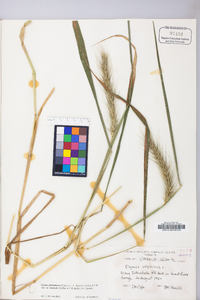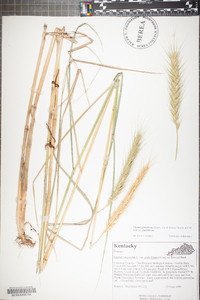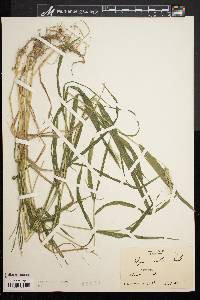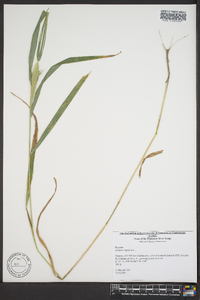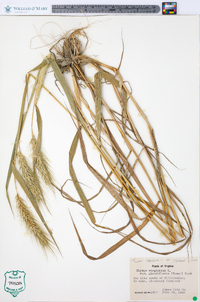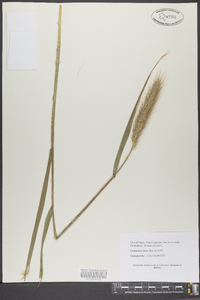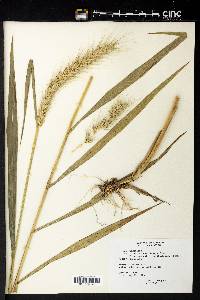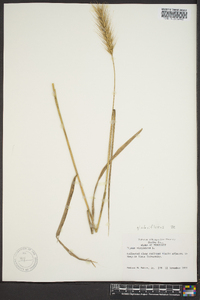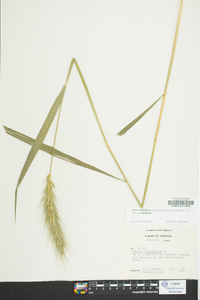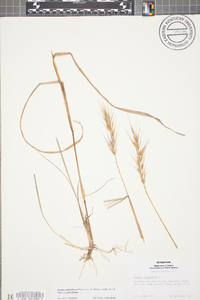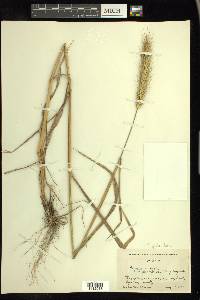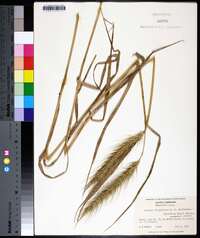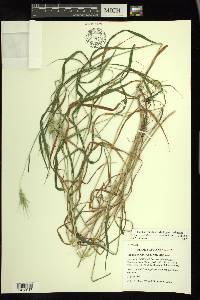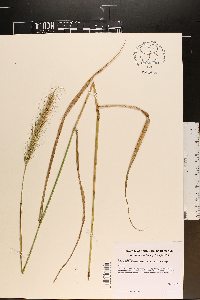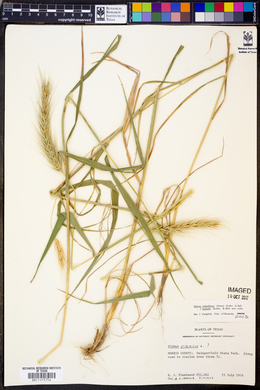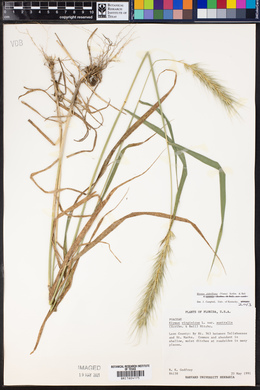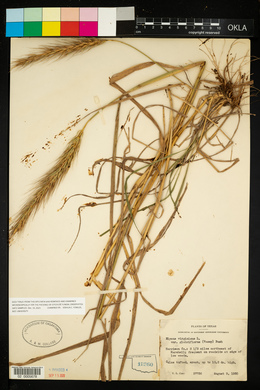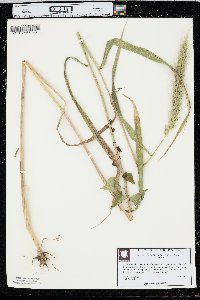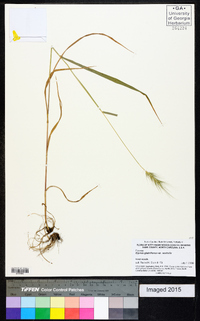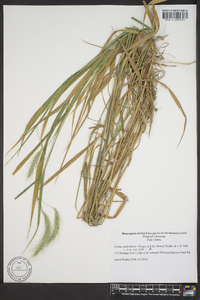
|
|
|
|
Family: Poaceae
Southeastern Wild Rye
[Elymus australis Scribn. & Ball, moreElymus australis var. glabriflorus (Vasey ex L.H. Dewey) Wiegand, Elymus canadensis var. glabriflorus Vasey ex L.H.Dewey, Elymus glabriflorus fo. glabriflorus , Elymus glabriflorus var. australis (Scribn. & Ball) J.J. Campbell, Elymus glabriflorus var. glabriflorus , Elymus virginicus var. australis (Scribn. & Ball) A.S. Hitchc., Elymus virginicus var. glabriflorus (Vasey) Bush, Elymus virginicus var. glaucus Beal] |
Plants cespitose, not rhizomatous, often glaucous. Culms 60-140 cm, erect; nodes 6-9, mostly concealed, glabrous. Leaves evenly distributed; sheaths glabrous or pubescent, often reddish brown; auricles absent or to 2 mm, usually purplish brown; ligules shorter than 1 mm; blades 7-15 mm wide, lax or somewhat involute and ascending, usually dull green, sometimes with a glaucous bloom, adaxial surfaces glabrous or densely short-villous. Spikes 6-20 cm long, (2)2.5-4(5.5) cm wide, erect, exserted, with (10)18-30(36) nodes, usually with 2(3) spikelets per node, occasionally with up to 5 at some nodes; internodes 3-5 mm long, 0.3-0.8 mm thick and usually 4-angled at the thinnest sections, glabrous or pubescent beneath the spikelets. Spikelets 10-20 mm, strongly divergent, often reddish brown at maturity, with (2)3-5(6) florets, lowest florets functional; disarticulation below the glumes and each floret, or the lowest floret often falling with the glumes. Glumes equal or subequal, entire, the basal 1-3 mm terete, indurate, moderately bowed out, without evident venation, glume bodies 7-18 mm long, (0.7)0.9-1.7 mm wide, linear-lanceolate, widening above the base, (3)4-5(7)-veined, smooth or scabrous, sometimes hirsute, margins firm, awns (10)15-25(30) mm, straight except the awns of the lowest spikelets frequently contorted; lemmas 6-13 mm, smooth, scabrous, or hirsute, awns (15)25-35(40) mm, straight except the awns of the lowest spikelets occasionally contorted; paleas 6-12 mm, obtuse; anthers 2-4 mm. Anthesis usually mid-June to late July. 2n = 28. Elymus glabriflorus grows on moist, damp, or dry soil in open woods, thickets, and tall grasslands, sometimes spreading into old fields and roadsides. It is found in most of the southeastern United States , extending north to Iowa, Illinois, Indiana, West Virginia, and along the Atlantic coast to Maine; it is rare north of Maryland. Anthesis is usually 2-4 weeks later than in E. virginicus -and other sympatric taxa, even in Texas, where it occurs up to a month earlier than the dates given (Davies 1980). Elymus glabriflorus varies greatly in its pubescence, but without clear taxonomic relevance. Plants that combine pubescent spikelets and, usually, pubescent leaves with somewhat shorter spikes (6-12 cm versus 9-20 cm) and lemmas (6-10 mm versus 7-13 mm) are typical on relatively dry, infertile soils, especially in hilly interior regions, and are less frequent on the southeastern coastal plain. They have been named E. glabriflorus var. australis (Scribn. & C.R. Ball) J.J.N. Campb. -In contrast, glabrous to scabrous plants that are often more robust usually grow on relatively moist or damp soils of bottomlands and upland depressions. Elymus glabriflorus is most closely related to E. macgregorii -and E. virginicus, forming occasional hybrids with both (Campbell 2000). It is sometimes confused with E. villosus , from which it differs in having erect spikes, and glumes that are bowed out and disarticulate at maturity. It has also been confused with E. canadensis , especially E. canadensis var. robustus , which may be derived from introgressants between the two species (Davies 1980). Hybrids with E. hystrix -are also known, with apparent introgression at some range margins, but artificial crosses with other species failed in several cases (Church 1967a, 1967b). From Flora of Indiana (1940) by Charles C. Deam [Elymus glabriflorus] has been found in several counties, and doubtless it will be found to be well distributed in the state when intensive work is done. It is a woodland grass found in both moist and dry situations. [Deam's "Elymus australis", a form of E. glabriflorus with hirsute glumes and lemmas,] has been found in a few places in the southern half of the state on wooded ridges and on post oak flats. ...... Indiana Coefficient of Conservatism: C = 3 Wetland Indicator Status: - |

